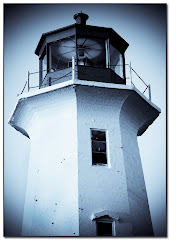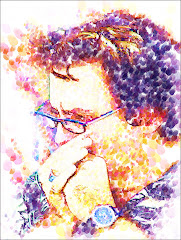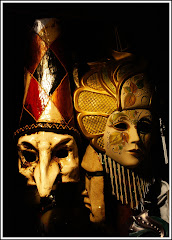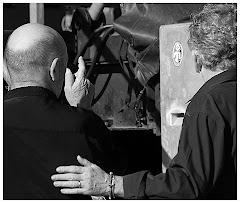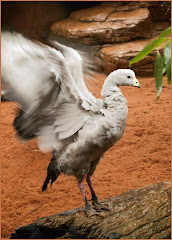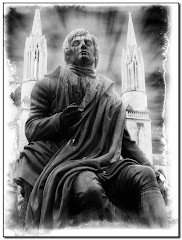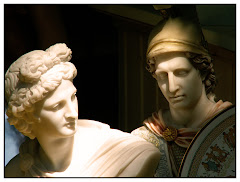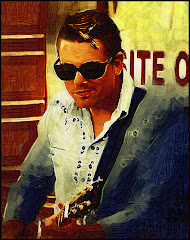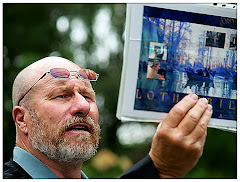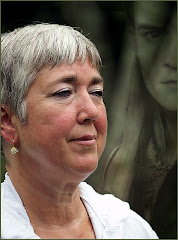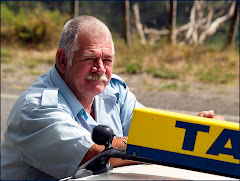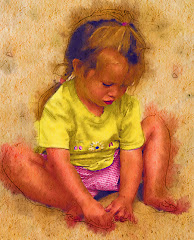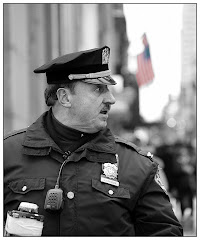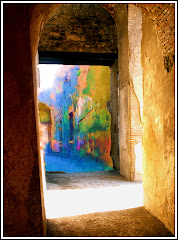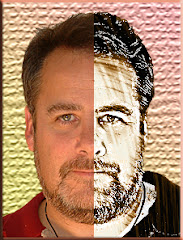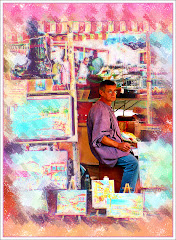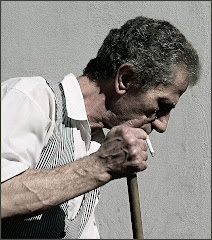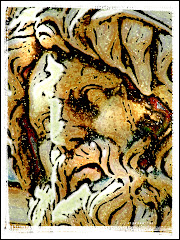
The great thing -- I mean the really great thing about travel -- is not so much the places you go, but the people you meet.
Take a good look at the guy in the picture.
What do you think of him?
Look hard at the picture and see what kinds of things you come up with. It's obvious we are looking at an Elvis fan, right? Now look at the position of his right hand...the way it's resting on the statue's shoulder. What opinions have you formulated about him?
"He" is Simon Vega. Vega served with the most successful singer of all time in the army and turned down the King's offer to come and work for him. Vega had just been married and he didn't want to leave his new bride, Teresa, for any longer than he absolutely had to. He still gets misty when he recalls the day he learned his friend, Elvis Presley, died.
Since that time, though, Vega has turned a portion of his house into a bona fide tourist attraction called "Little Graceland." He's copied the design of the gates from Presley's Memphis palace. He's built a miniature size replica of the home Presley was raised in. He's got cards, all 64 official Presley albums, one of Presley's uniforms, personal letters and much more. If you want to take his picture, he will put on his Elvis tour jacket (which I suspect fits a little more snugly than it used to) and obligingly poses.
He's not a nut. He's one of the nicest guys I've met. When we left, he hugged both of us.
Whenever anyone comes by the museum, he drops what he's doing and takes them on a personal tour. Okay. I can guess what you're thinking: what does this have to do with Photoshop or photography?
How do I tell you who Simon Vega us with just one or two pictures?
The first consideration is to put your subject into the proper context. You need to put them into a setting that helps you, as the artist, communicate something about them. Since most of you folks couldn't care less about who he is or what he's about, I need to create a picture with a 'hook,' something that will attract your attention and make you look for longer than two or three nanoseconds.
Hopefully the Elvis statue and Simon's posture do that.
Even before clicking the shutter, you need to have carefully composed the elements of your picture in your mind. Background is a key consideration. Should it be cluttered with interesting stuff? Should it be plain so as not to distract from the subject? Does the ambient background contribute or detract from the main subject?
How much of the subject needs to be in the frame? Some of the shots I took had Simon's full body in them. But I have to ask myself if a shot of his shoes helps make the picture stronger or weaker. Weaker. I wanted your attention fixed on just him and the statue.
What are the lines of the photograph? "Lines" is an admittedly jargonish way of saying "the path your eyes travel on." We will naturally look at a picture the same way we read: left to right. So I wanted your eyes to go to Elvis' face, see Simon's hand and then travel in a more or less straight line to Simon's face.
 So does it work as a graphic? When you looked at the picture did you pause longer than a couple of seconds? Let me ask you to think again what thoughts you formulated about the subject.
So does it work as a graphic? When you looked at the picture did you pause longer than a couple of seconds? Let me ask you to think again what thoughts you formulated about the subject.How about the second picture? Simon obligingly posed with his arms draped over the gates. But it wasn't until he called my wife to come over and stand with him that I got the picture I wanted. He's active. He's doing something which is MUCH better than the "hands in the lap" portrait junk.
NOW think for a second about how these concepts might work for your next portrait. (You may even want to consider looking for our newest course "Perfect Portraits" due out by the end of the summer. Hint hint. If you'd like to be notified when it is released, email us at http://www.photoshopbasics.com/ and we'll let you know.)
If you're ever in the tiny Texas town of Los Fresnos, drop by and see Simon Vega. Tell him David thanks him for sharing his afternoon with a "Houndog" like me.



